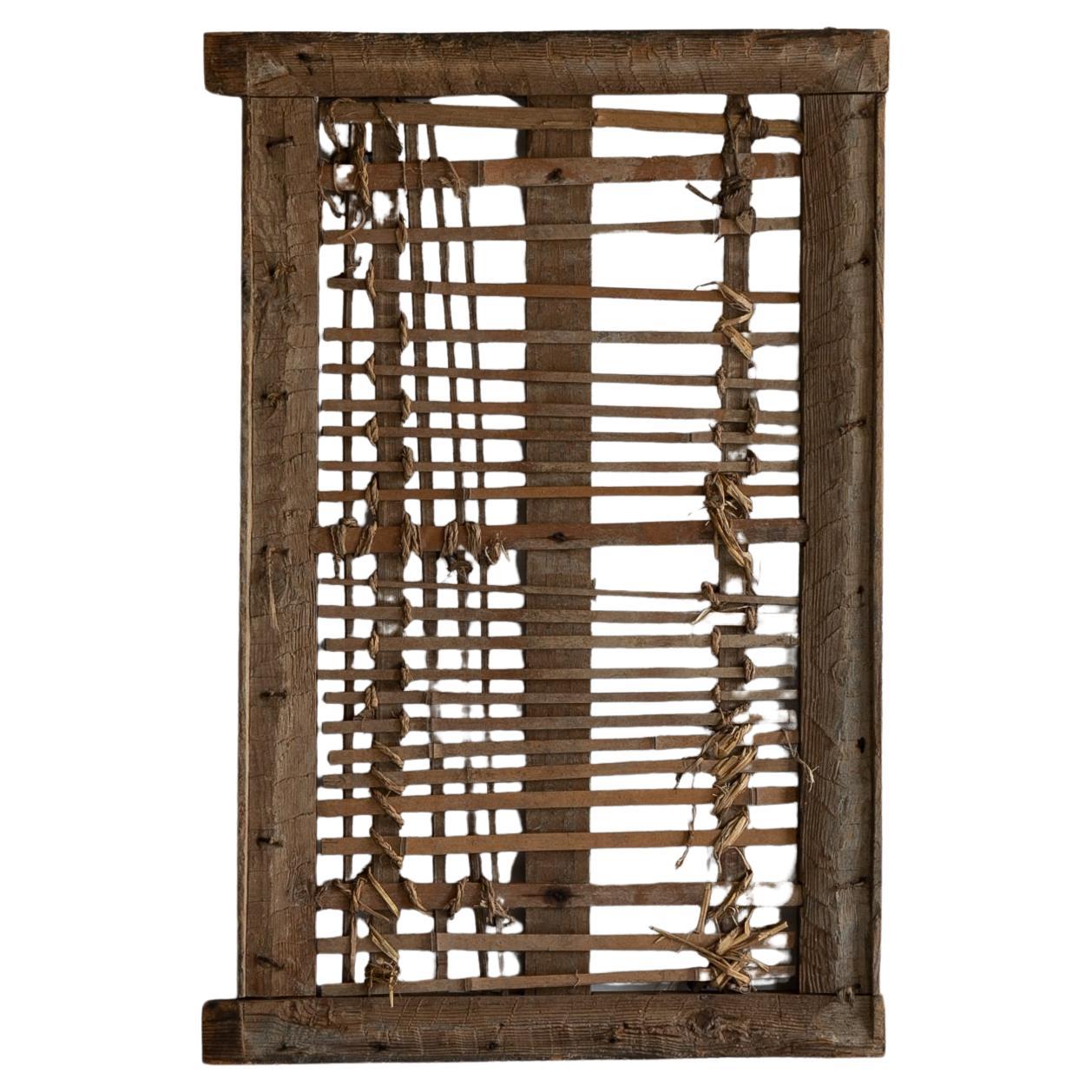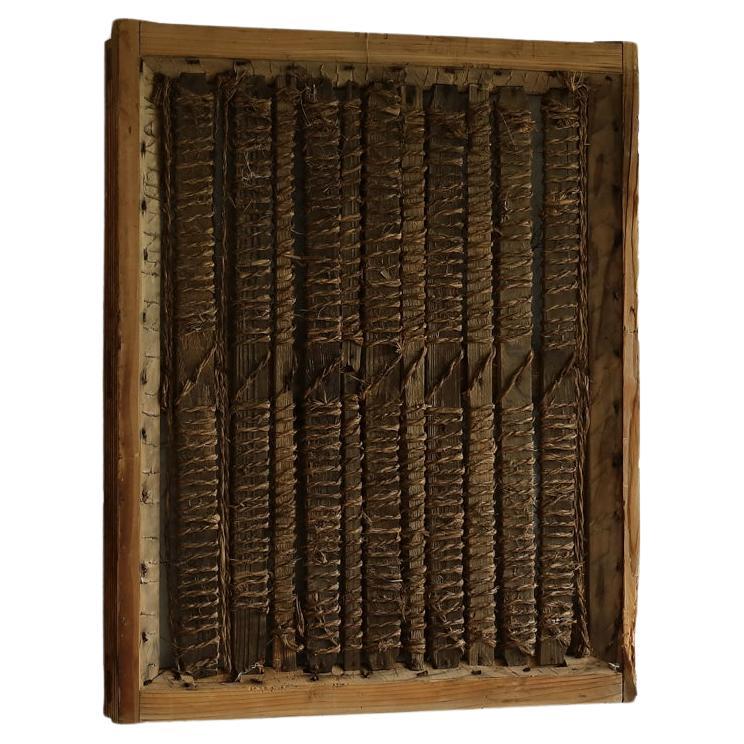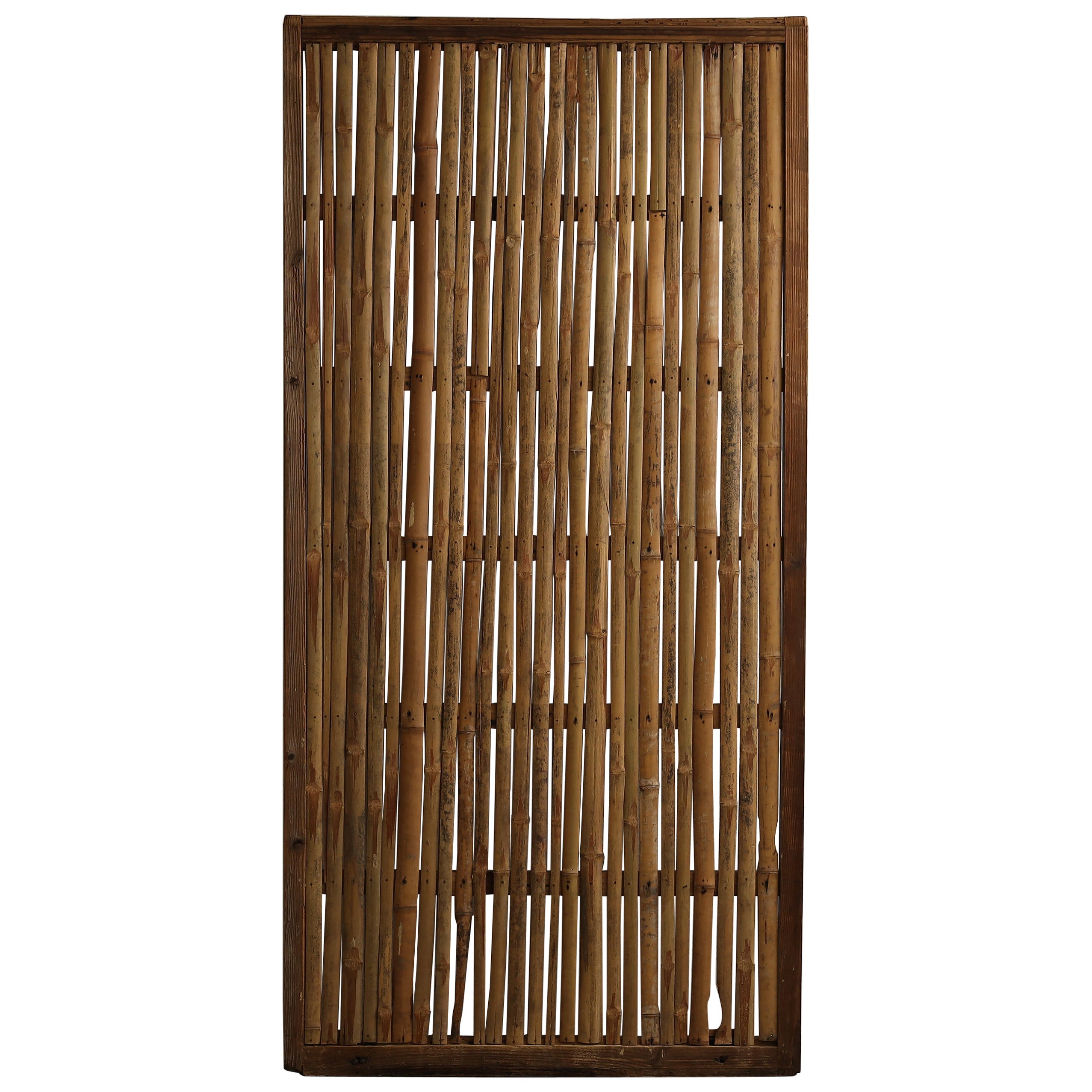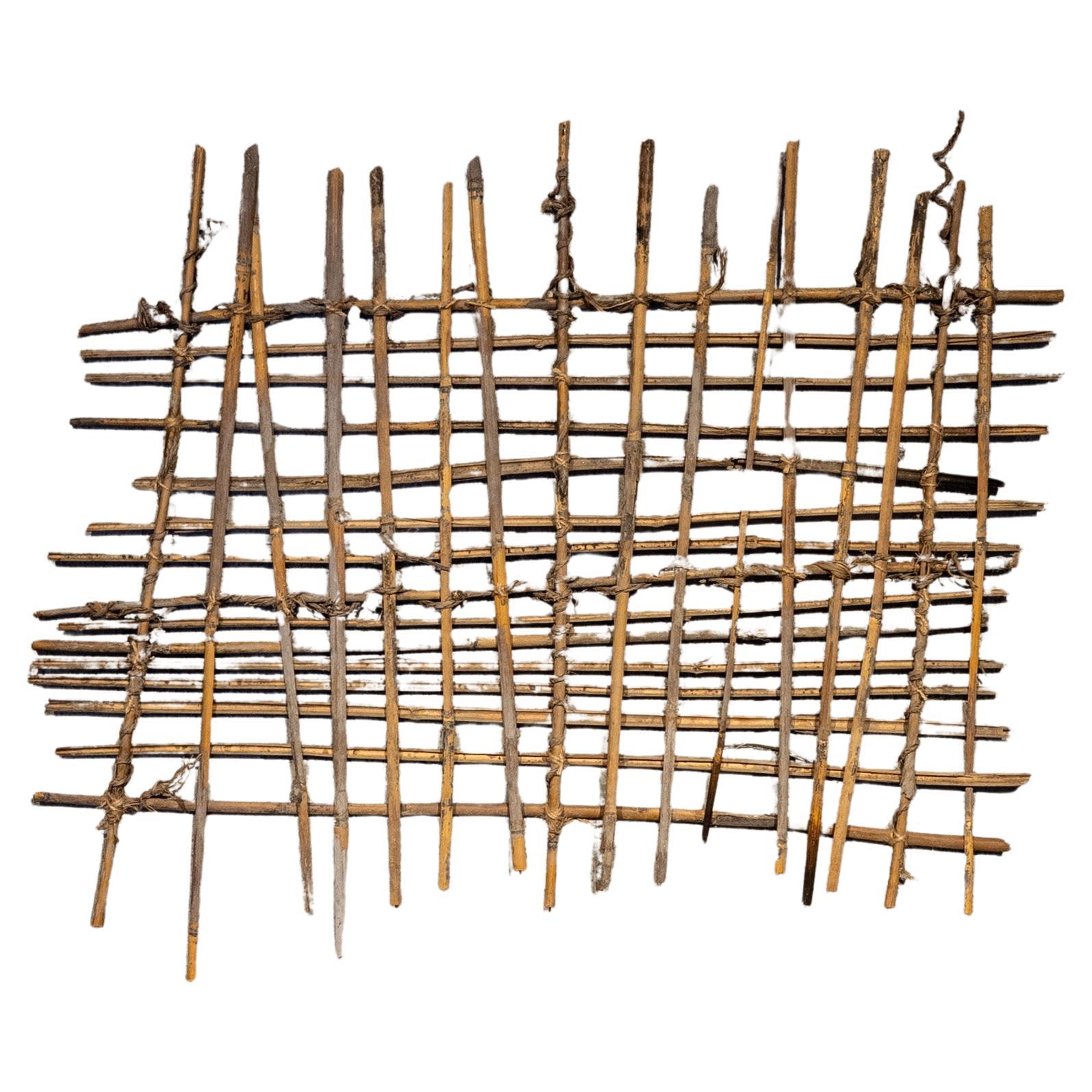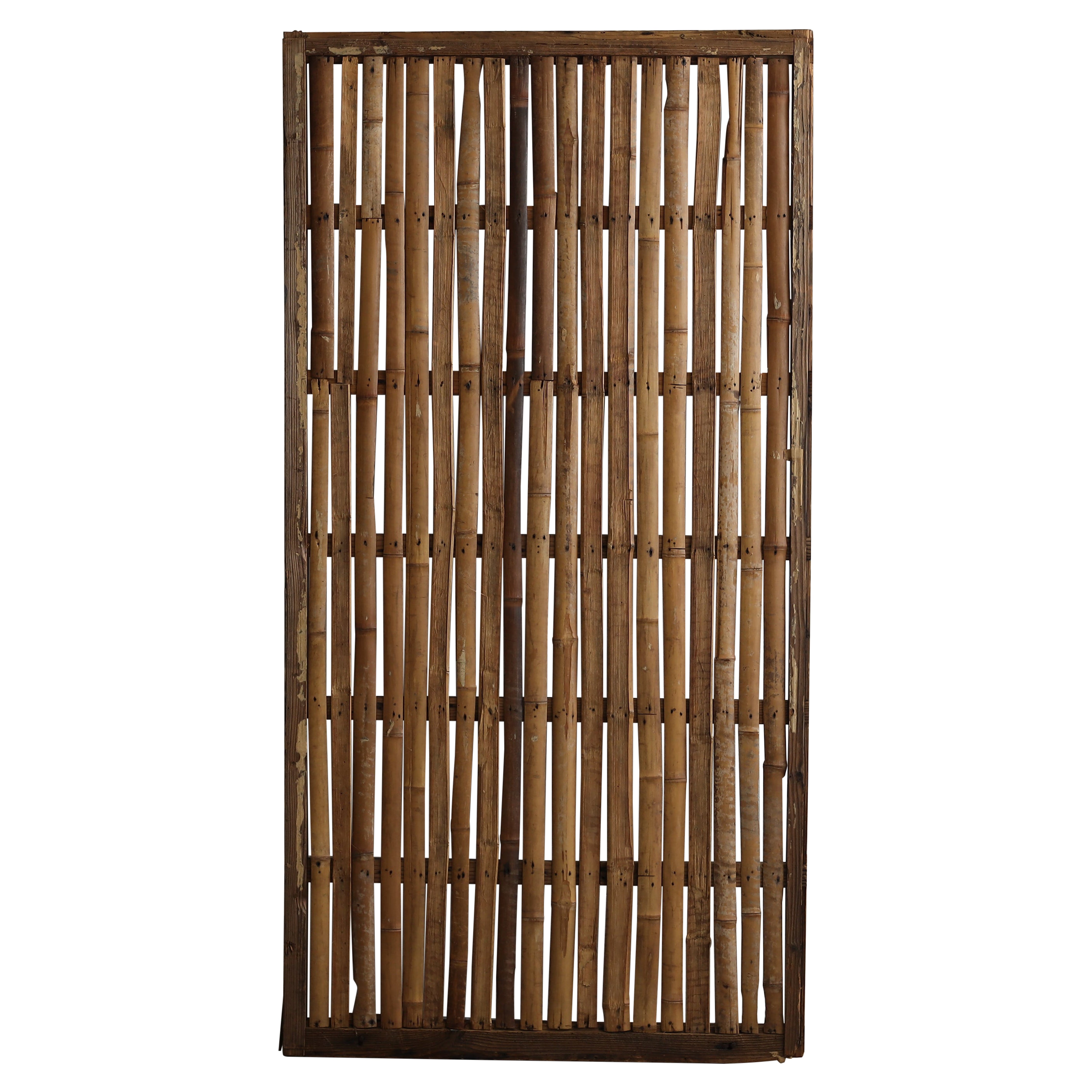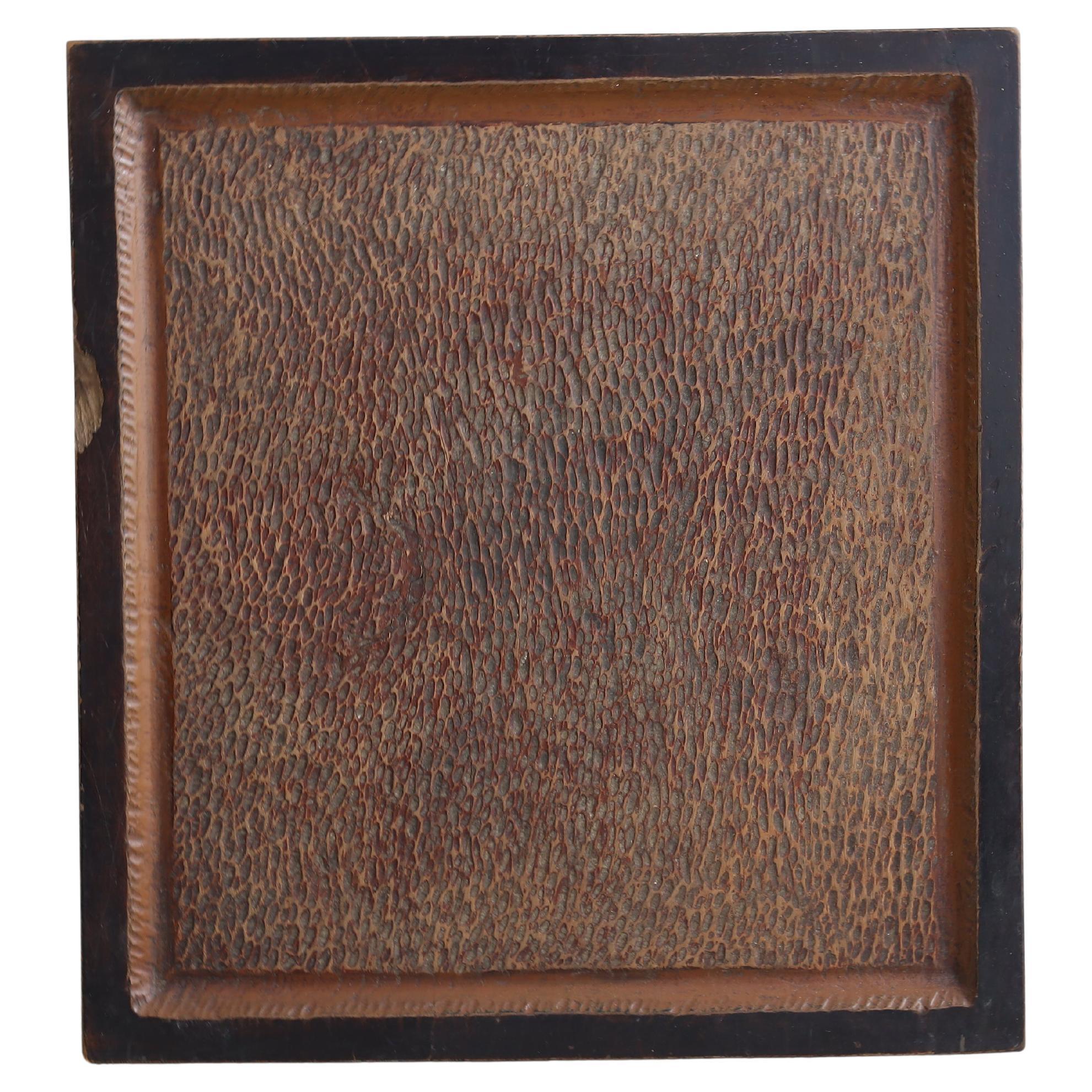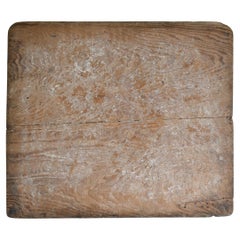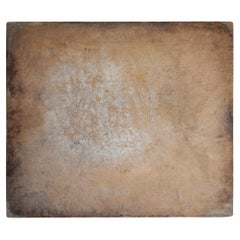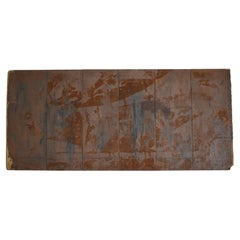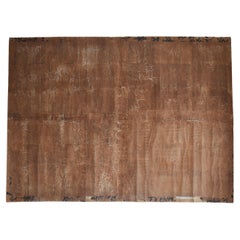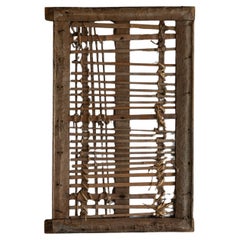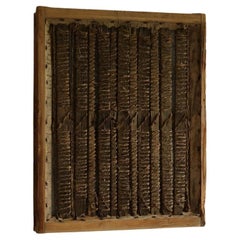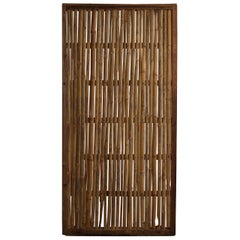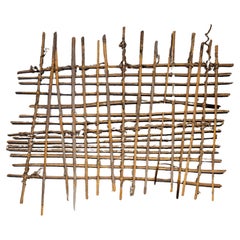Items Similar to Japanese Antique Small Door Wall Decoration 1860s-1900s / Abstract Art Wabi Sabi
Want more images or videos?
Request additional images or videos from the seller
1 of 17
Japanese Antique Small Door Wall Decoration 1860s-1900s / Abstract Art Wabi Sabi
$800
£615.41
€714.32
CA$1,128.19
A$1,263.76
CHF 663.77
MX$15,366.96
NOK 8,405.55
SEK 7,979.13
DKK 5,331.25
About the Item
This is an old small window frame made in Japan. It was originally used as a traditional Japanese mud wall fixture. It dates back to the Meiji period (1860s-1900s) and has been in use for over 100 years.
The outer frame is made of cedar wood, which is lightweight yet maintains a solid structure. The central latticework is constructed of bamboo, each carefully secured with a straw cord. This structure was designed so that the soil to be applied to the walls would bite firmly, and is filled with the wisdom and rationality of the Japanese lifestyle of the time.
The underlying substrate, normally invisible from the inside, is revealed as the soil peels off over time, giving the wall an accidental sculptural beauty. The randomly created expressions and the weathering of the materials evoke the spirit of “wabi-sabi,” an abstraction that can be likened to that of contemporary art.
Although these fixtures have already fulfilled their original role, they have not lost their presence, and are being revitalized as art pieces that add new value to the space. Because of their small size and light weight, they can be easily displayed in limited spaces such as bathroom walls, hallways, and niche spaces, for example.
This one-of-a-kind fixture, an accidental combination of history and beauty, is both a part of traditional architecture and a unique presence that brings a new perspective to contemporary interiors. We hope you will incorporate it into your daily life as a gem that will allow you to experience the depths of Japanese culture.
Weight: 1.5kg
_______________________________________
Our Philosophy
Objects always tell the truth.
All I can do is just to face with them sincerely and give
them deep affection as much as I can.
There is no boundary of nationalities and of eras in beauty.
But I think now is the time we choose 'Japanese style' and it
will be the best way to remind us of what we are losing
today and to question us about an essence of beauty again.
I hope that you can touch the memories which the objects here have,
feel and think of something invisible but exists undoubtedly.
- Dimensions:Height: 25.99 in (66 cm)Width: 21.66 in (55 cm)Depth: 1.58 in (4 cm)
- Style:Meiji (Of the Period)
- Materials and Techniques:
- Place of Origin:
- Period:
- Date of Manufacture:1860s-1900s
- Condition:Wear consistent with age and use.
- Seller Location:Chōsei District Nagara, JP
- Reference Number:1stDibs: LU10403245792212
About the Seller
New to 1stDibs
Joined in the past six months.
5.0
Platinum Seller
Premium sellers with a 4.7+ rating and 24-hour response times
Established in 2017
1stDibs seller since 2025
19 sales on 1stDibs
Typical response time: 3 hours
- ShippingRetrieving quote...Shipping from: Chōsei District Nagara, Japan
- Return Policy
Authenticity Guarantee
In the unlikely event there’s an issue with an item’s authenticity, contact us within 1 year for a full refund. DetailsMoney-Back Guarantee
If your item is not as described, is damaged in transit, or does not arrive, contact us within 7 days for a full refund. Details24-Hour Cancellation
You have a 24-hour grace period in which to reconsider your purchase, with no questions asked.Vetted Professional Sellers
Our world-class sellers must adhere to strict standards for service and quality, maintaining the integrity of our listings.Price-Match Guarantee
If you find that a seller listed the same item for a lower price elsewhere, we’ll match it.Trusted Global Delivery
Our best-in-class carrier network provides specialized shipping options worldwide, including custom delivery.More From This Seller
View AllJapanese Antique Wabi-Sabi Wood Board 1860s-1900s / Wall Decoration
Located in Chōsei District Nagara, JP
This is an old Japanese wooden board called “Mochiita” (rice cake board).
It was used during the Meiji period (1860s-1900s) and is made of pine wood with a rich texture.
As the name ...
Category
Early 20th Century Japanese Meiji Decorative Art
Materials
Pine
Japanese Antique Dough Board Wall Art 1879s / Display Stand Wabi Sabi
Located in Chōsei District Nagara, JP
This is an old noodle board made in Japan.
On the back, it is inscribed “明治十二年” in writing, clearly indicating that it was made in 1879s.
Over 140 years have passed, and this piece s...
Category
Antique 1870s Japanese Meiji Decorative Art
Materials
Cedar
Japanese Antique Large Iron Plate Abstract Art 1900s-1940s / Wabi Sabi
Located in Chōsei District Nagara, JP
This is a door that was an iron plate door made in Japan.
It is an old fixture made in the early Showa period (1900s-1940s), with iron plates carefully stretched over a cedar wood fr...
Category
Mid-20th Century Japanese Showa Decorative Art
Materials
Iron
Japanese Antique Large Paper Mat "Abstract art" 1860s-1920s / Wabi Sabi
Located in Chōsei District Nagara, JP
This is a very old Japanese matte paper.
It was made during the Meiji period (1860s-1920s) and is very large, measuring approximately 1900 mm x 1420 mm.
The Japanese paper is carefu...
Category
Early 20th Century Japanese Meiji Decorative Art
Materials
Paper
Japanese Old Bamboo Room Divider 1950s-1970s / Partition Wabisabi
Located in Chōsei District Nagara, JP
This is an old room divider made in Japan.
This furniture was made in the Showa period (1950s-1970s) and has an iron frame with delicate bamboo work.
The combination of linear patte...
Category
Late 20th Century Japanese Modern Screens and Room Dividers
Materials
Iron
Japanese Antique Huge Tin-Plated Door 1920s-1940s / Abstract Art Wabi Sabi
Located in Chōsei District Nagara, JP
This is a huge door of a Japanese-made warehouse.
It is a sliding door made in the early Showa period (1920s-1940s), and the craftsmanship of the time is evident throughout.
The surf...
Category
Vintage 1910s Japanese Showa Doors and Gates
Materials
Tin
You May Also Like
Japanese Antique Door "Wall Decoration" 1860s-1900s / Abstract Art Wabi Sabi
Located in Sammu-shi, Chiba
This was a very old Japanese warehouse (kura) window sliding door.
It was made during the Meiji period (1860s-1900s).
The frame is made of cedar wood and the lattice is bamboo.
It w...
Category
Early 20th Century Japanese Meiji Decorative Art
Materials
Bamboo, Cedar
Japanese Antique Door, Abstract Art Wabi Sabi, 1860s-1900s
Located in Katori-Shi, 12
Very old Japanese sliding door.
The simple design conveys the charm of the material.
You can feel the world of wabi and sabi.
Recommended as a wall painting.
It was made in the Mei...
Category
Early 20th Century Meiji Doors and Gates
Materials
Wood
Japanese Antique Bamboo Sliding Door, Object Mingei Art Panel, Wabisabi Door(2)
Located in Katori-Shi, 12
This is an antique Japanese bamboo door.
It is from the Meiji period (1860s-1900s).
It is made mainly of cedar and bamboo.
It has a simple design that conveys the charm of the mater...
Category
Early 20th Century Japanese Meiji Doors and Gates
Materials
Bamboo, Wood
Japanese Wall Art, Wabi Sabi, Japan, 19th Century
Located in Edogawa-ku Tokyo, JP
The Japanese element - Komai - that can be used as a unique wall decoration. The window frame, known as "komai," is a traditional architectural structure used to create partitions o...
Category
Antique Mid-19th Century Japanese Decorative Art
Materials
Wood
Japanese Antique Bamboo Sliding Door, Object Mingei Art Panel, Wabisabi Door(4)
Located in Katori-Shi, 12
This is an antique Japanese bamboo door.
It is from the Meiji period (1860s-1900s).
It is made mainly of cedar and bamboo.
It has a simple design that conveys the charm of the mater...
Category
Early 20th Century Japanese Meiji Doors and Gates
Materials
Bamboo, Wood
Japanese Antique Wood Carving Wall Panel, Abstract Art , Wabi Sabi
Located in Katori-Shi, 12
This wall-hanging carved wooden ornament is made from recycled zelkova wood from a kotatsu table from the Meiji period.
The beautiful grain of the wood has been carefully carved by ...
Category
Early 20th Century Japanese Meiji Doors and Gates
Materials
Wood
More Ways To Browse
Original Vintage Circus Posters
Pastry Display
Stone Niche
Vintage Wooden Display Shelves
Walnut 4 Drawer Chest
Walnut Silver Box
Wood Desk Organizer
Wood Paddle
18th Century Bombe Chest
1912 Mirror
19th Century Indian Door
African Iron Wood
Antique Rigs
Antique Silver Owl
Antique Stirrups
Antique Surgical
Antique Swedish Copper
Antique Velvet Ribbon
